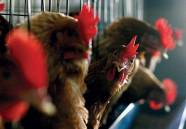NZ: Hen welfare research released

A comprehensive science-based assessment of the welfare of egg producing hens in commercial production systems in New Zealand has been released by the Ministry of Agriculture and Forestry (MAF).
Dr Cheryl O’Connor, programme manager, MAF Animal Welfare says MAF commissioned this research knowing how necessary it is to have the most complete and up-to-date information when making sound policy decisions to improve animal welfare.
“The findings will form a key part of future considerations when the National Animal Welfare Advisory Committee (NAWAC) reviews the Animal Welfare (Layer Hens) Code of Welfare this year.”
Hen welfare – the research
The research was conducted by AsureQuality and involved a survey of layer hens throughout the country kept in different housing systems (large and small-free range and cage farms, organic free-range and barns) and at both earlier and later stages in their laying period. It supported the view that good management is essential for animal welfare, regardless of the housing system used.
The report shows that welfare concerns differ between cages and free-range systems. Feather loss was found to be worse in cages whereas mortality was higher in free-range systems and wounds were more prevalent in all non-cage systems.
“These results are a comprehensive collection of behavioural and biological data. They showed that stress in the hens was similar in all types of housing systems, however, the report highlights that more variation was found within farms of the same type than between different systems and good and bad management practices were found in all systems. This will be an essential consideration in the code review.”
All commercial production systems have the potential for positive and negative effects on the layer hen. Codes of Welfare are designed to meet best overall animal health and behavioural needs and that is what will form a very important part of the review by NAWAC.
AsureQuality’s investigators comprised of veterinarians, veterinary epidemiologists, field technicians, an independent poultry specialist and a scientist from Massey University.
Click here for a summary of the research (PDF)
Join 31,000+ subscribers
Subscribe to our newsletter to stay updated about all the need-to-know content in the poultry sector, three times a week. Beheer
Beheer








 WP Admin
WP Admin  Bewerk bericht
Bewerk bericht